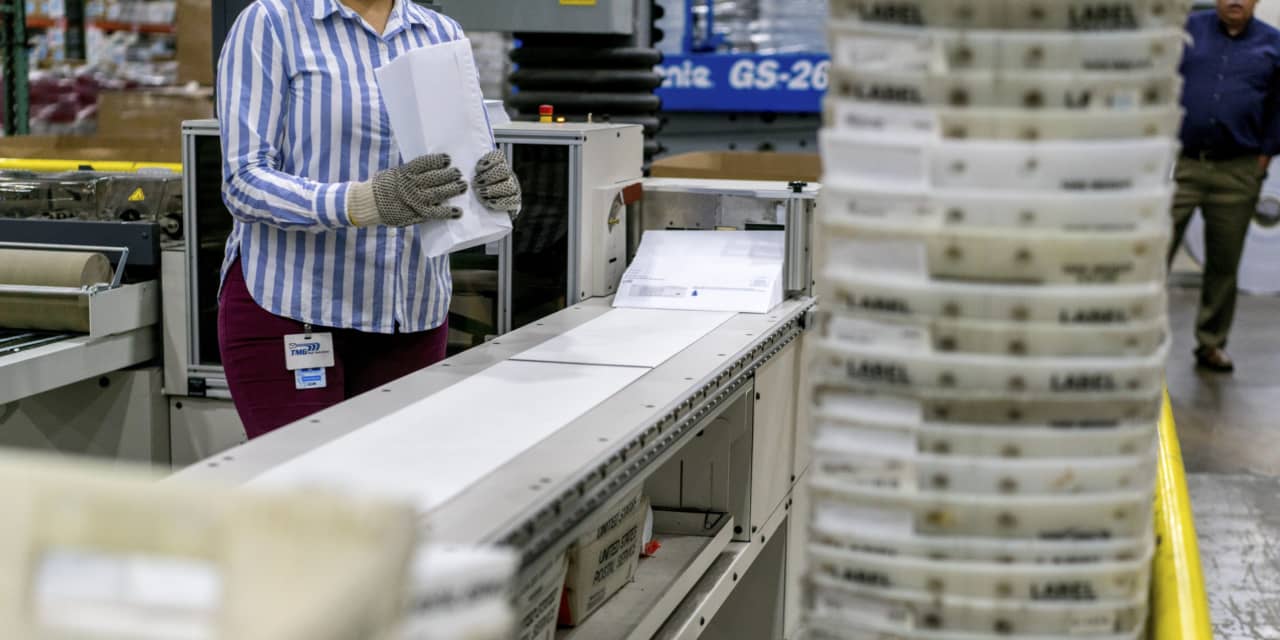Shares of
Broadridge
Financial Solutions climbed to a record this week, and the company sees the good times continuing.
At an investor day Thursday, the financial-technology provider laid out its plans for the next three years. Investors should like what they heard.
The $22 billion-market capitalization Broadridge is best known for its business of distributing proxies, regulatory filings, and other investor statements on behalf of practically every publicly traded U.S. company and mutual fund. It also has suites of software used by wealth managers and a variety of financial-services institutions. The stock notched a record close earlier this week on Monday.
During Broadridge’s analyst day Thursday morning, management walked investors through each of its businesses, detailing plans for the next three years.
Broadridge’s business growth has been driven by a few trends, including increased “mutualization” in the financial services industry. Rather than banks, wealth managers, corporations, or mutual funds building their own software or cobbling together their tech stack from a variety of distinct vendors, Broadridge offers them a one-stop shop.
Software for things like trade processing, record-keeping, and accounting aren’t flashy features that financial institutions compete on—they’re necessary but undifferentiated functions that it can make sense to outsource to software sold by Broadridge. The company is also increasingly moving into the front office, via internal software development and the 2021 acquisition of trading platform Itiviti, the biggest in Broadridge’s history.
Another growth trend that management discussed Thursday is the dramatic pandemic-era increase in the popularity of investing, leading to more investors in more companies and funds, or greater positions. That means more communications for Broadridge to deliver and more fees to charge. Management expects continued growth in “position count” at a mid-to-high-single-digit rate, in percent terms, going forward.
The shift from paper to digital is a drag on Broadridge’s revenue—it doesn’t need to charge customers for postage or printing costs—but carries much wider profit margins. The result is Broadridge makes the same profit from delivering a proxy statement by snail mail or by email, says CEO Tim Gokey. He expects the trend toward digital distribution to continue in the next three years.
It’s a good business, with recurring revenue, wide profit margins, and economies of scale. Broadridge shares have returned 38% including dividends since the company’s last investor day in December 2020, about 10 percentage points more than the
S&P 500.
Back then, management’s three-year targets called for 7% to 9% annual recurring revenue growth and 8% to 12% annual growth of adjusted earnings per share. Broadridge delivered at the high end or above for both ranges.
The next batch of targets presented Thursday are for another three years of recurring revenue growth of 7% to 9% a year and adjusted EPS growth of 8% to 12% annually. Management also expects adjusted operating margin expansion of 0.5 percentage point a year.
“Broadridge’s 3-year outlook for the period of FY23-FY26 is notably similar to its prior 3-year targets, which speaks to the consistency of the business model that investors have grown accustomed to,” wrote Raymond James analyst Patrick O’Shaughnessy on Thursday. “The FY23-FY26 recurring revenue outlook is ahead of consensus and is driven primarily by strong organic recurring growth.”
Notably, Broadridge’s shareholder returns look set to increase over the coming years, after elevated spending on acquisitions and development over the past three years. From fiscal 2020 to fiscal 2023—which ended in June—some 80% of cash flow went to investments.
“The last three years were a significant investment phase for us because of what we invested in the wealth platform and the acquisition of Itiviti,” Gokey told Barron’s. “That investment is behind us, and as we look forward…it will be pretty balanced between internal investment and return to shareholders.”
That means a rising dividend—as Broadridge has managed for 12 years straight—and the potential for more share buybacks. The stock currently yields 1.7% annually.
Broadridge’s investor communications business could also get a boost in the coming quarters. Evercore analyst David Togut estimates that a possible high-profile proxy fight between Trian Partners and
Walt Disney
could generate an additional $50 million in revenue for Broadridge this fiscal year—should it get contentious and require multiple communications to Disney’s large shareholder base. The activist investor is pushing to add its CEO Nelson Peltz to Disney’s board. Gokey declined to comment on an individual company.
He’s more concerned with recurring revenue growth, anyway. Investors should be happy if Broadridge’s next three years look like its last three.
Write to Nicholas Jasinski at [email protected]
Read the full article here




